The Complete Guide to Branding for Travel and Tourism
By Kyla Steeves
Share this article:
- Facebook icon
- LinkedIn icon
- Twitter icon

Your tours and activities shouldn’t be the only unforgettable thing. Guests should remember your tour name , too. That’s where the importance of branding comes into play.
As a marketing tactic, branding personifies your tourism business. It gives you a voice, looks, personality, and values — which makes you more relatable to your guests and other travelers. Ultimately, a well-defined brand helps you appeal to the right audience, as well as leave a lasting impression.
If you want to create a brand identity or tweak your current one, this article is just for you. We outline what you need to know about positioning and differentiating your business — which includes:

The importance of a tourism branding strategy
How to create a memorable travel brand.
- 15 travel branding ideas
So let’s get started:
Frequently, tour and activity operators lose sight of their brand when they rely heavily on Online Travel Agents (OTAs) for bookings. Although these channels help to expand your reach, they don’t necessarily do your brand justice. That’s because you’re just another listing on their site — meaning you get absorbed into their brand identity instead.
Think of it this way. A traveler who books your tours and activities on Tripadvisor encounters the Tripadvisor brand throughout the booking journey — not yours. Consequently, they don’t get much of a chance to become familiar with your business. When it comes to referrals or repeat bookings, they’ll remember Tripadvisor, but will have a harder time recalling your name.
Although this may seem like it isn’t a huge deal — since you can give a glimpse of your brand in-person — it’s not a long-term solution. While listing on OTAs is still a great marketing strategy, it’s important to build your brand outside of these sites. And here are four main reasons why:

1. Branding gets more bookings
When your tour and activity company looks polished and legitimate, guests will be more likely to book with you. That’s because professional translates to trustworthy. With a unique brand voice and beautiful brand design, you’ll make your business stand out as the best option for a safe and unforgettable experience.
2. Branding improves recognition
Without a doubt, your brand is the face of your business. Guests won’t just remember your name, but your logo as well. So whenever they interact with you — whether it’s browsing your website, reading your emails, or seeing your Facebook ads — they’ll be able to recognize your business instantly.
3. Branding makes you memorable
Many think of branding as a logo and a slogan. But it’s so much more than that. From start to finish, a brand is a visual, emotional, and tangible experience that you create for your guests. When you get this right, guests will remember for a long time — not just a couple of weeks after the tour or activity. And those that think of you will be loyal to you.
4. Branding increases your value
Brand equity is the value of your brand name. Having a well-known brand name will help establish your company as a leader in your niche and give your business a boost for further expansion — like opening up a tour office in another location. Since brand equity is all about brand recognition, you can increase your value by building a stronger brand and delivering consistent exposure — which brings us to the next section
If you’re starting your own tour company and haven’t defined your brand yet, make this a priority. Early branding will provide your team with direction, and help customers grasp what your tourism business is all about.
Even if you’re well-established, it’s never too late to fine-tune your brand. Instead of targeting a huge customer base, try thinking of fresh business ideas in tourism and hospitality, and narrowing your focus on a particular niche. Why? Because it can give you a competitive edge and improve your online visibility.
So follow these steps to build a better brand identity:
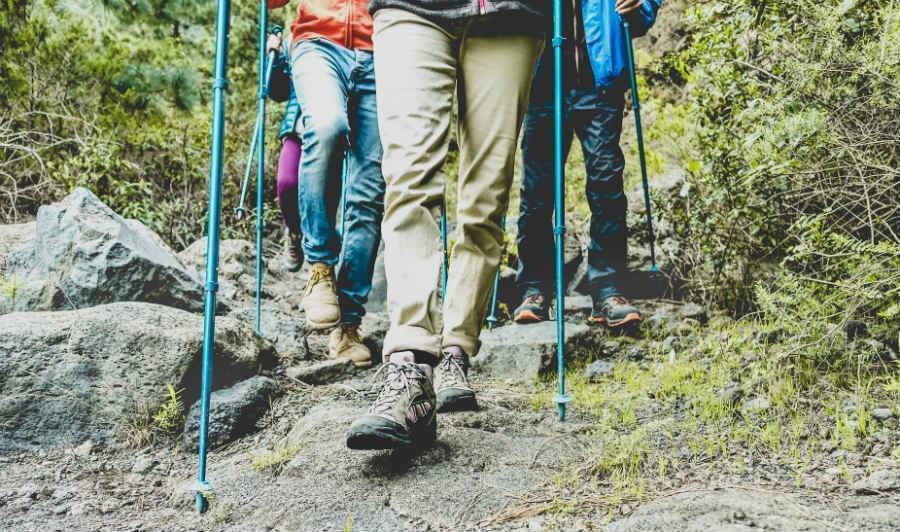
1. Craft your brand story
Every business has a backstory. There’s always a reason why a company comes to be. Sometimes, it sparks out of an opportunity, but more often than not, a tourism business starts from passion — passion for adventure , the destination, or the community.
Knowing why you started will help to uncover your brand values — which are the building blocks of a compelling brand story. By writing them out and sharing publicly, you’ll have principles to guide your business decisions, as well as a reference point to build trust and credibility.
To dig deeper into your company’s purpose, ask yourself the following questions:
- How did you start your tour and activity business?
- Where’d you get the idea? What inspired you?
- How is your company different from your competitors?
- What does your tour and activity business strive to do?
- What makes your team outstanding?
Work these answers into your brand story to tell who you are as an operator and what sets you apart. Keep in mind that it doesn’t have to be lengthy — brief is best. Nor does it have to be perfect; authenticity goes a long way.
2. Identify your target audience
It’s easier to match your brand to your target audience than the other way around. Depending on your offerings, you might already appeal to a particular group of people — different types of travelers like different types of travel experiences. So branding before knowing your target audience could lead to something that doesn’t make any sense.
For example, let’s say you run a craft beer bike tour. It’s safe to assume eco-friendly, locavore millennials will want to try this experience. But if you build a brand that speaks more to DIY, suburban mothers, there’s going to be a disconnect, and you’ll have a much harder time reaching those initially interested.
Who’s most likely to book your tours and activities then? Where are they from, how old are they, what’s their lifestyle, interests, and personality? These are just a few examples of demographic, physiographic, and geographic attributes you should consider.
Use this information to create a brand identity that your target audience will strongly identify with. You can also use it to gain insight into their communication style, preferred method of booking, and where they hang out online. All of which can help you with your marketing efforts.

3. Align with your destination brand
What’s a destination brand? It’s a shared vision that aims to generate visitor interest by promising a unique travel experience based on everything a place offers. Usually, a Destination Marketing Organization (DMO) builds the destination brand and provides direction for local businesses to follow suit.
Take Ireland as an example. Most travelers visit the Emerald Isle for the pub culture, castle hopping, and traditional folklore. So Tourism Ireland promotes it as a destination to “fill your heart.” This brand position makes new visitors believe they’ll have heart-warming moments while also giving tour and activity operators insight into what they want out of their trip.
That’s why it’s a good idea to find a role within your destination brand. Visitors arrive with preset expectations thanks to it, and naturally, book things to do that match. If you deliver on what they’re looking for, they’ll have a positive and memorable experience — which impacts their perception of the destination, as well as your business.
Of course, this doesn’t mean you have to copy and paste the destination brand. You can still express your brand identity while playing a part in the overarching destination story. It just comes down to making a connection between the two. Like with the above example, a bus tour company might make its brand more enchanting to go along with that of Tourism Ireland.
4. Figure out your brand voice and tone
Your personality, attitude, and values shine through when you communicate with others. The same applies to your tour and activity business. Every written message — whether online or offline — reveals your company’s characteristics and mission. That’s known as your brand voice.
A clear and distinct brand voice helps to position yourself in the marketplace and associate with your target audience. However, it’s got to be the same across all channels to be effective. Being sassy on social media but helpful on the blog only makes readers confused — which means they won’t get an accurate picture of your business.
On the other hand, your tone of voice is interchangeable because it reflects your mood. Its purpose is to have an emotional impact on the reader based on the context of the message. For example, a serious tone works well for a payment request whereas a booking confirmation is better off sounding joyful.
To figure out your brand voice and tone, start by:
- Reviewing your company’s mission statement and values
- Looking at your current content for common themes
- Considering how your target audience communicates
- Evaluating your destination’s brand messaging
Whatever you come up with, break it down into three or four words. These will be your primary voice characteristics for all of your messaging. You can further describe your brand voice in a content style guide with the do’s and don’ts of writing accordingly. As for the tone, you have a little more flexibility with its use, but it shouldn’t stray too far from your brand voice.

5. Give your travel brand a makeover
Here’s where the fun begins. There’s nothing more exciting than putting together a look for your tour and activity business. From a memorable logo to unique typography, you get to make your brand pop while giving your guests a great first impression.
Visual elements also contribute the most to brand recognition. For example, when someone thinks of Google, the first thing that comes to mind is the primary colours. In the tourism industry, Contiki stands out to young travelers with imagery that plays on the Fear of Missing Out (FOMO). So what does your brand design need to get noticed?
- Logo: This is the foundation of your brand identity because it goes everywhere — on your website, social media, merchandise, promotional materials, and more. Whether it’s a logomark or logotype, the design should be simple, memorable, timeless, and accurately symbolize your company’s mission and culture.
- Typography: Believe it or not, fonts come with personality traits. While Serif fonts (Arial, Verdana) come across as reliable and mature, Modern fonts (Impact, Rockwell) give off a bold and progressive vibe. Knowing this, you can use a specific font to influence how guests perceive your business.
- Colour Palette: Similar to fonts, colours have an emotional impact on people. For instance, red means passion, green is natural and blue goes with trust. With the right mix of colours, you can reveal a lot about your business while making your guests feel a certain way.
- Imagery: Photos and videos show the kind of experiences you offer. But images also engage and inspire viewers — helping them picture having the experience, too. That’s why you should use imagery wherever you can. Just remember that brand images should be cohesive too, so consider using presets to promote uniformity.
6. Build consistency into your tour website
This is where everything comes together. Not only is your website a digital storefront, but it’s also the face of your company. Online visitors go there seeking more information about your tours and activities. While doing so, they get a clear picture of who you are as a business, too.
For this reason, it’s important to have brand consistency throughout. That means every page should resemble the other. From the look to voice to feel, your brand should be apparent no matter where someone clicks.
There are several ways to show off your brand on your website. So here are a few must do’s to get you on the right track today:
- Create an About Us page: Sometimes, online visitors want to learn more about your business beyond the Booking page. So share your brand story with them in your About Us section. Here, it’s a good idea also to outline your mission and core values. That way, a conscientious traveler can see what makes you an ethical tourism example .
- Use relevant keywords: Once you know your target audience, you can figure out what search queries they frequently use for travel shopping. These terms will dictate what long-tail keywords you should sprinkle throughout to optimize your website — which includes page titles, headers, body text, meta-descriptions, image alt-text, and your URLs.
- Maintain a uniform design: Your brand should be recognizable based on your look alone. So on your website, make sure you use the same colour palette, typography, and imagery on every page. As well, place your logo at the top, and create a branded favicon (the icon next to the URL) to remind visitors where they’re browsing.
- Remember your brand voice: You have written content everywhere on your website. So there’s a perfect opportunity to strengthen your brand by ensuring all of your copy sticks to your brand voice. You may even consider keeping a blog to establish this further. Just remember that whoever contributes should follow your content style guide.
- Customize your booking process: After taking the time to build your brand into your website, it’d be a shame for your Booking page to miss the mark. Online visitors shouldn’t feel like they leave your site when they go to book. That’s why it’s best to use an online booking system that doesn’t lead to a separate domain and allows for some customization.

15 extra travel branding ideas
Branding your tour and activity business isn’t a one-and-done type of job. The more you do, the more your brand strengthens over time, especially if you make branding part of your strategic planning process . So here are a bunch of additional ways you can help build your brand:
- Hire a professional photographer to take high-quality images of your experiences
- Do the same with a professional videographer
- Partner with a travel influencer that fits your brand
- Create a Facebook contest to create hype for your brand
- Only post content on social media channels that your target audience uses
- Make your tour guides into brand ambassadors
- Contribute guest posts to publications within your industry
- Send out a survey asking guests what they think of your brand
- Come up with different slogans and test which one drives the best results
- Use Answer the Public and Quora to get blog topic ideas that are relevant to your audience
- Customize your booking notifications with your brand voice
- Design templates for your email marketing that follow your brand design
- Come up with a brand hashtag for your guests to use when posting about their experience with you
- Reward your guests for referrals with a discount code
- Let your staff take over social media to show the human side of your business
Need a little help strengthening your tourism brand?

Join the 30-Day ‘Things to Do’ Challenge for Tour Operators
Complete one small task every day that’ll help your brand shine online.
Related Articles
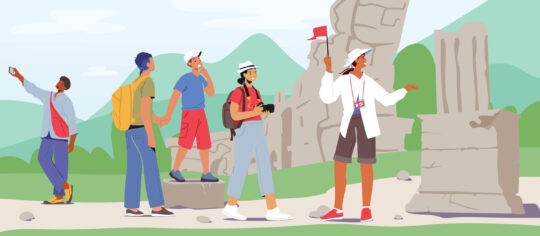
How to start a Tour Operator business in 2024: A step-by-step guide
Dreaming of running a successful tour company? Check out these strategies!
- Business Tips

3 tips to tackle cart abandonment and capture more bookings in 2023
Imagine this: a shopper comes across your website and finds an enticing experience offering. They read your product description, flick…
Search Blog
Subscribe to our newsletter.
Get tips and strategies to grow your business and impress your guests.
Blog Categories
- Booking Management
- Guest Experience
- Marketing Strategies
- Operator Highlights
Destination Branding: How To Give Your Destination A Distinct Voice
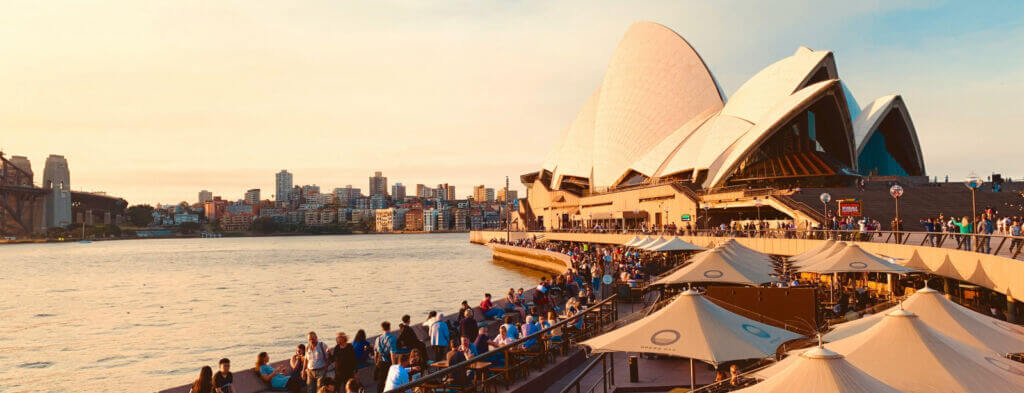
Every Australian who has traveled internationally has, at one time or another, been hit with the same line… throw another shrimp on the barbie! 🦐
But… Australians call them prawns, not shrimps. So, where did this phrase—one that’s become synonymous with describing Aussie culture—even come from? 🤔
After some Google searching, we were stunned to find the phrase was from a $15 million destination branding campaign by Tourism Australia in the 1980s. Interestingly, the ‘Come and say G’day’ campaign was made exclusively for the North American market and the advertisements only ever ran there.
Paul Hogan says “I’ll slip an extra shrimp on the barbie for you” in the iconic destination branding campaign. Image source.
Yet… it worked.
After the destination campaign launched in the US, Australia shot from #78 on the most-desired holiday list for Americans to #7. Arrivals to Australia from America doubled over the first three years and the growth rate over four years was more than 25% .
It was a masterclass in destination branding . The campaign captured Australia’s brand personality, it has a specific target audience and most importantly—it increased tourism numbers.
In this guide, we’re going to dig a little deeper into the power of destination branding, how to build a brand identity campaign, and a few examples that hit it outta the park.
Let’s get started 👇
What Is Destination Branding?
Destination branding vs. marketing: what’s the difference, why is destination branding so important, how to establish a brand identity, destination branding examples that hit the mark, drive more visitors through an authentic voice.
Destination branding is a unique way to position a city or country to help it stand out and drive more tourism. Instead of a focus on consumerism or attractions, destination branding aims to shape the perception of a destination using culture, brand values, heritage, landscapes, and experiences to help resonate with a traveler.
It’s driven by a modern-day desire to experience something different. In fact, a GetYourGuide study found 95% of American travelers prefer to spend at least part of their trip on new and unique experiences. By branding a destination as different and unmissable—marketers can help travelers meet that goal.
Destination branding is sometimes confused with everyday travel marketing campaigns—and it’s easy to see why. Both strategies aim to drive more tourists and increase awareness of a destination, but there are granular differences between the two.
Destination branding plays a long game.
Brand development focuses on the personality of a destination and will lean on cultural heritage and unique identity to shape a campaign. This involves crafting a narrative that authentically represents the destination’s uniqueness and allure. It focuses on three main attributes:
😎 Identity. A strong focus on history, traditions, natural beauty and unique culture is the foundation of any destination branding campaign.
🤝Connection . It hits potential visitors right in the feels. Destination branding can help a future visitor connect with a country’s culture, food, unique beauty and history through storytelling .
🥅Long-Term Goals. It shapes the perception of the tourism destination into a consistent image that distinguishes it from other places.
On the other hand, destination marketing casts a wide net using campaigns, advertisements, and promotional activities. It wants to attract visitors through:
📺Promotions. A destination’s attractions and activities along with other perks like accommodation and transport are marketed to potential travelers.
🎯Targeted Campaigns . It focuses on identifying specific market segments and tailoring campaigns to their travel goals.
✈️Bookings. Destination marketing is all about getting people on the plane (or train… or bus). The main goal is to convert the target audience into paying tourists.
While marketing can win people over for a weekend break or Summer holiday, destination branding goes a little deeper. It aims to connect deeply with a potential visitor and plant a seed so they yearn to visit and one day experience the place themselves.
Destination branding is a critical aspect of marketing for any DMO (destination marketing organization). It plays a crucial role in shaping the perception of a destination and influencing travelers’ decisions.
And countries can spend big bucks to brand a destination.
A decade ago, the United States dropped $150 million on the “Discover America” campaign. It placed television commercials in nine nations, purchased ads on the Tokyo subway, and even had Facebook pages in Portuguese and German. It resulted in an additional 1.1 million tourists visiting the following year, representing a 2.3% increase YoY and an additional $3.4 billion in international visitor spending.
A branding asset from America’s 2012 campaign. Image source: Forbes .
The strategy is even more impressive when applied to destinations that were once , as described by the New York Times , “dangerous and conflict-ridden”.
Just look at the rebranding of Croatia case study.
Stats show in 2018, nearly 560,000 Americans visited the country. But in 1998, a mere 41,000 Americans made the trek. And it wasn’t just more people from the US visiting—nearly 20 million tourists visited Croatia in 2018, up from 1.5 million in 1995.
So, what happened? 🤔
The country did a lot of work to shed the reputation of the ethnic conflicts of the 1990s and any lingering memories of postwar socialist Yugoslavia. Croatia focused its brand messaging on its natural beauty, traditional cuisine and Mediterranean lifestyle to rebrand itself as a hidden gem of European tourism.
Image Source
Since then, millions more tourists have flocked to the country every year, and HBO even filmed “Game of Thrones” in Dubrovnik in southern Croatia.
“Nowadays, Croatia is one of the top destinations in the Mediterranean,” Kristjan Stanicic, director of the Croatian National Tourist Board, explained to the New York Times.
“Our competitors are Spain, Italy, France, Greece and that hasn’t always been the story. People know now that we have great beaches and other things to do.”
Here’s a closer look at why place branding is so important and can turn a country into a must-visit destination 👇
- A better way to carve a unique identity . Effective destination branding can build a unique picture of how a traveler perceives a place. A focus on specific culture, community or heritage can set a destination apart and tourists will know it’s the only place they can have specific experiences. It’s also a way for a destination to shape a narrative and hit back at any misconceptions or outdated stereotypes visitors may have about a region.
- More competitive against other destinations. The tourism market is crowded, and as emerging countries start to take a piece of the pie, effective destination branding can give a location a competitive edge. For example, data shows millions of Americans choose Europe as their favorite holiday destination, so European countries must compete for these tourist dollars. Croatia is a great example of how to stand out from the crowd by leaning on unique features like natural beauty and tradition to win tourists over.
Most importantly, a strong destination brand can have a direct impact on the local economy.
More tourism can lead to more jobs, potential investment and growth of tourism-related businesses, and general prosperity for locals.
Take the example of Australia’s “Come and say G’day’ campaign we talked about at the start of this article. After it was launched in January 1984, it depicted Australia beyond the stereotypes of having dangerous wildlife or just snorkeling on the Great Barrier Reef. Americans were greeted with a sense of humor and warmth, and the campaign made it clear Australia wanted them to visit.
The economic impact was immediate.
The Sydney Morning Herald reports there were 70,000 inquiries from Americans about vacationing in Australia after the campaign launched. Holiday visa applications shot up by 54%. And 285,000 calls were made to the campaign’s hotline 📞
Any city or region can talk about a zoo or a great restaurant. But what is it about the place that will make tourists really want to visit?
Building a destination brand is all about introspection. If you focus on what makes a destination (really) unique, it’s much easier to draw more visitors in. Here’s what to think about when you create a destination branding strategy 👇
1. Celebrate Your Destination’s Unique Cultural Identity
Embracing the unique cultural identity of your destination is essential for creating a strong brand. Leaning on local history and traditions along with cuisine, art and even folklore can help paint it as a one-of-a-kind destination for visitors.
This strategy is an ideal way to position a destination—even when competition is fierce.
Tucked in the Nordics, Denmark must compete with popular destinations like Norway, Sweden, and Finland for attention. The team at VisitDenmark uses a mix of user-generated content (UGC) , stunning visuals, and a hint of mystery to paint Denmark as the Land of Everyday Wonder.
It also leans heavily into something only Denmark can offer—Norse Viking mythology and the Danish monarchy.
This is a simple example of how destination branding can go beyond beautiful scenery and cuisine to tap into truly unique experiences for visitors.
2. Show and Tell Through Captivating Stories
Most successful destination branding campaigns have one thing in common: a good story.
A captivating narrative about a country’s history, culture, values or even humor can be enough to grab an audience’s attention. By telling a compelling story, it’s easier to craft a narrative about why a destination is a good choice and more importantly, why it should be the top choice.
Destination Canada recently took a different approach to storytelling.
It teamed up with TED to talk about topics that aren’t usually a focus for DMOs. The 14-episode series covered everything from Canada’s extreme climate to the Indigenous communities and even traditional throat singing.
This approach was a true think-outside-the-box approach to destination marketing. Rather than focusing on why people should visit Banff National Park, the series started a conversation around truly unique parts of the country like its culture, sustainability, and climate.
3. Think Like a Local
Local businesses and residents can be an untapped resource for building a destination identity.
These are the people who live, breathe and love the area you want to promote. ( To work with them on unique short-form video, get in touch with our team! ) Put yourself in their shoes and ask: just what is it that makes this place so unique? 🤔
This is exactly what Calgary did with its Basecamp to Adventure campaign in 2017.
The area has stiff competition from major Canadian cities like Montreal, Toronto, and Vancouver, but it was desperate to attract younger travelers to the region. So, the campaign targeted some of the most popular attractions like Lake Louise, Calgary ‘Hoods, and Sled Island, and turned them into fuel to brand the entire region.
Most importantly, the campaign focused on photographs and experiences from real people who had visited the areas in Calgary.
The branding process was successful, especially for native Canadians living in Vancouver and Toronto. The number of 18-24-year-olds visiting the Tourism Calgary website jumped by a whopping 322%.
When it comes to successful destination branding, numerous campaigns have managed to put a place on the map. Let’s take a look at a couple that stand out 👇
Think Outside The Box: The Sheep Campaign That Went Viral
Faroese sheep mounted with Google cameras. (Courtesy of Visit Faroe Islands)
Faroe Islands is often overlooked by tourism juggernauts around it like Scotland and Iceland.
The tiny Danish archipelago has a population of just over 50,000 and it’s so remote that until 2016, it wasn’t even featured on Google Street View.
So, the country’s tourism board, Visit Faroe Islands, petitioned to get Google to map its roads and created the Sheep View 360° campaign. The grassroots campaign began when local residents strapped 360-degree cameras to sheep on the island to capture video, images and GPS coordinates to get the job started.
The campaign went viral and along with a 30% increase in visitors after it launched, Google also took notice.
The best part about the destination rebrand is, despite having no media budget, it generated an estimated $50 million in PR revenue and a staggering 2 billion media impressions 🤯Needless to say it made the tourism board’s stakeholders very happy.
Townsville: Queensland—But Make It Not The Great Barrier Reef
When people think about Australian travel, most will immediately think of destinations like Sydney, Melbourne, and the Great Barrier Reef.
Townsville, a city in North Queensland and a growing coastal destination in the Northeastern part of Australia, is on a mission to change that. Through its local DMO, Townsville Enterprise , and a team of three marketers, Townsville is repositioning itself by focusing on its five main regions: Magnetic Island, Burdekin, Charters Towers, Hinchinbrook, and Palm Island.
“A major challenge of our destination is actually awareness from across our domestic and international markets,” says Simone Sullivan, a marketing manager with Townsville Enterprise.
“Destination awareness is quite low for our region, and we know that off the back of our research, so being able to leverage shared stories of people who have been to our region to use throughout our marketing strategy is really key.”
To stand out from nearby tourism hotspots like Whitehaven Beach and the Great Barrier Reef, Townsville Enterprise focused on marketing its natural beauty, history, and culture. It’s going beyond the wide appeal of every tourist and targeting couples seeking romance, families who want a place to unwind, and even those studying marine science and curious to explore.
With such a small marketing team, branding the destination has been a challenge. Townsville Enterprise decided to harness UGC using CrowdRiff in their various marketing and social media channels to increase content output and make campaigns authentic. By doing so, the DMO can showcase the region’s natural beauty through the eyes of real visitors.
The results have been eye-popping.
Townsville North Queensland has seen a 70% increase in consumers taking action to book a holiday, and there has also been a 116% boost in destination awareness.
“Being authentic and organic is another key component to how we are building the brand of Townsville North Queensland. We want to be real and organic and raw and that’s where social media content and sharing the experiences that visitors have had in real terms comes in.”
- Simone Sullivan
Visitors want to experience something unique. Something different. Something they can’t get anywhere else.
In the flood of social media posts, viral videos, and constant marketing, destination branding gives DMOs a chance to stand out. But a successful strategy requires numerous initiatives and introspection. Think about what makes your destination truly unique and how you can connect deeply with your audience.
Using emotion, personality and identity, destination marketing can help potential visitors in the decision-making process and carve out a place as an authentic experience that someone yearns to have.
And if it comes down to it, don’t be afraid to think outside the box…. Even if it means strapping a camera to a sheep. 🐑
Own your brand story and attract more visitors.
Download our free e-book containing everything you need to know about creating a #1 visitor’s guide that showcases your brand.
Related content

5 Destination Marketing Strategies & Ideas To Promote Tourism

TikTok is Banned in over 30 US states: Here’s What That Means for Tourism Marketing
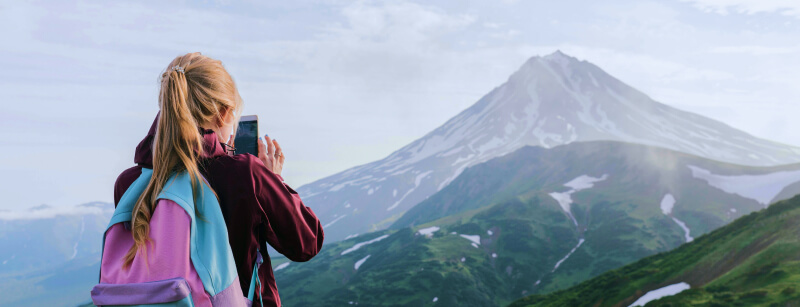
How to Create a Travel Video That Gets Noticed in 2024

What Type Of Travel Content Speaks The Loudest To Travelers?

Social Media Video 101: A Travel Marketer’s Guide

Oscar-Worthy Short-Form Videos in Travel Marketing
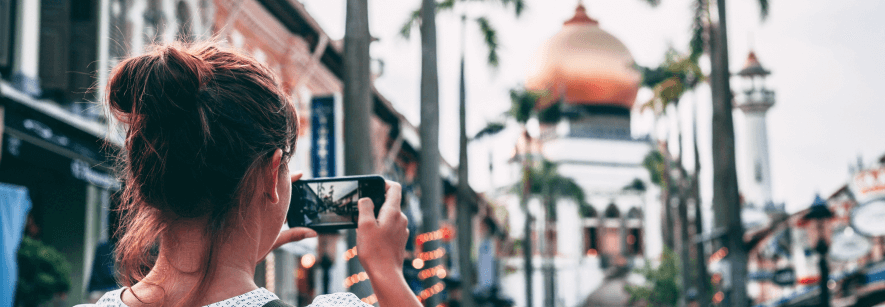
8 Social Media Trends Destination Marketers Need To Know in 2024

2024 Content Calendar Template for Destination Marketers

A Travel Marketer’s Guide to UGC Rights
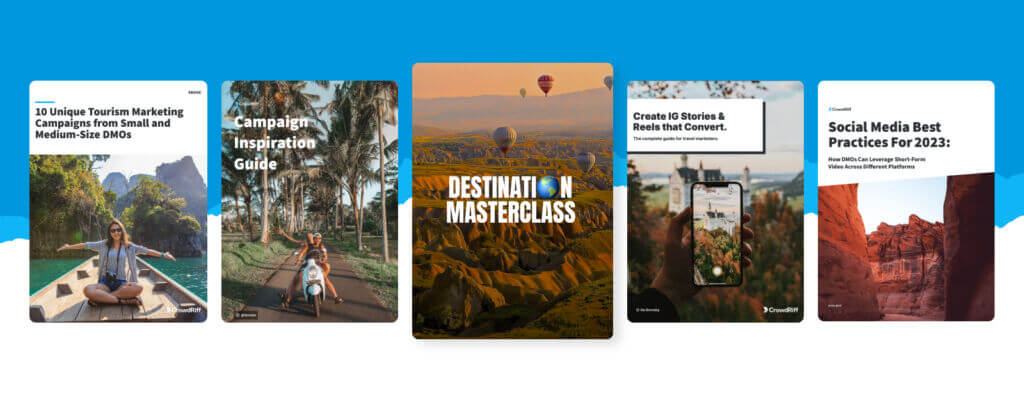
Fuelling success: DMOs’ must-reads for 2024 planning
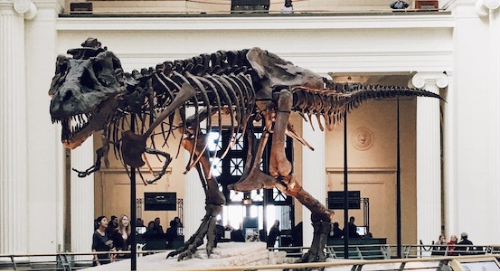
Museum Marketing: Top Trends And Strategies for Success
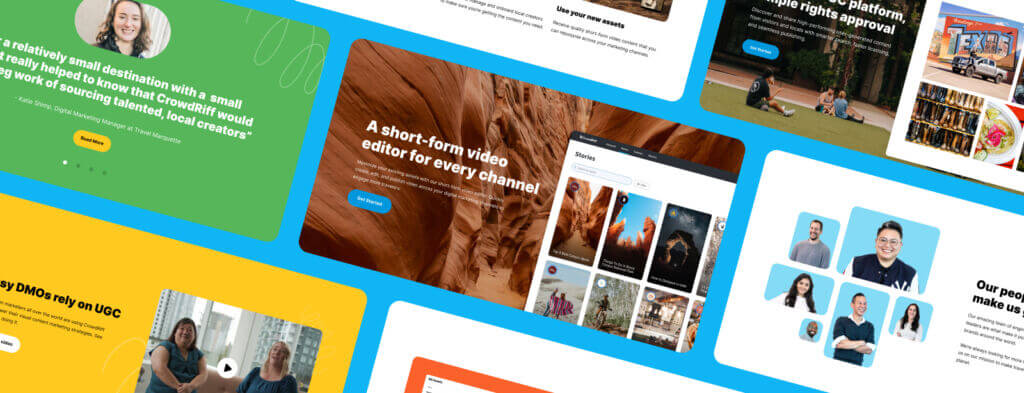
A New Vision for CrowdRiff, A New Era for DMOs
The go-to guide to branding for travel and tourism

By Kevin Tjoe — 14 Mar 2022
destination marketing tourism branding
Updated March 2024 – Picture this: Your tourism guests from one year ago are standing at a barbeque, and in conversation, they happen to rave about the great experience they had with your company. When neighbor Bob asks who he should book with, will your business be remembered and recommended? This is the power of branding travel and tourism.
Whether you’re building your brand from scratch or wanting to refresh your existing business brand identity, read on for a clear guide to branding travel and tourism businesses.
The importance of branding in tourism
What is tourism branding, exactly? It can encompass the name, visual identity, tone of voice, experiences, brand values, and industry associations of your tourism organization. Branding can also have powerful benefits for your business. Some of these can include:
- Building recognition and familiarity for your business
- Helping your target audience to establish trust in your business
- Encouraging guests to find and rebook with you again
- Empowering you to scale and expand your business to other locations and markets.
So where do you begin as you’re developing a robust, memorable brand in tourism?
Essential elements for your tourism branding strategy
Whether your guests are booking through a reseller, directly on your website, or with a local agent, your brand needs to be unique and consistent. Here’s a tourism destination marketing strategy that can make that happen.
Finding the right brand name

It turns out, there’s a lot in a name. A catchy and unique brand name will increase your chances of recommendations and repeat bookings. This handy article dives into how to create the right name for your tourism brand. In short, aim to:
- Research competitor names
- Keep the brand name short and sharp
- Consider how easy the name will be to search for and find online
- Include the location within the name, and
- Trademark and protect your brand name.
Importantly, your brand name should also reflect the unique qualities and experiences your tour or activity business offers. Amaz’n Kayak Tours sounds fun and friendly, for example, while a name like Pinnacle Cruise Experiences exudes luxury and exclusivity.
Creating a strong visual identity through brand design
Every successful brand needs a strong visual identity and brand image, and it can be worth hiring professionals to help you with this process. Ideally, you’ll set up a ‘style guide’ to ensure consistent visual branding. This might typically include information on your:
- Logo Your logo, or graphic symbol, can be used across web, print, social media, reseller sites, and more. As with your brand name, your logo should reflect your tourism experiences and unique aspects of your business.
- Colors A consistent color palette used across your website, booking form , and other marketing collateral will help build recognition and familiarity. You might like to consider the colors of the landscapes in which you operate as a starting point when developing your brand color scheme.
- Imagery The photos you use to promote your tours or activities can matter a great deal when someone is weighing up whether to book. Focus on crisp, high-quality images taken on a sunny day; include the human side of your business, and be sure to capture happy guests with their permission. You might also plan to use a certain filter or color tint to ensure consistency across all images.
- Fonts and typography Fonts are more than just letters on a page; they are a reflection of your brand’s character and essence. When selecting fonts for your travel business, consider factors such as readability, versatility, and alignment with your brand’s personality. Whether you opt for classic serifs, modern sans-serifs, or playful scripts, ensure consistency across all communication channels to maintain brand cohesion.
Creating your brand story
Think about why your tour company exists: what made you start it and what you started with. Consider what makes your tours or activities special and what makes your team stand out. Think about what made you want to run tours, events, or activities in your local area, and what makes them exciting for you.
Answering these questions can help you form a compelling brand story, which can then be shared on your website, social media, and public platforms. A passionate brand story helps your target audience to form an emotional connection with your brand and makes for a far more meaningful tourism experience for guests.
Developing your brand voice

To develop your brand’s tone of voice, think about who your brand would be as a person. How would they talk? What are the quirks that make them likable? Your brand voice can be used across SEO web content , video content , booking steps, and any other marketing collateral where guests might interact with your brand.
For example, a surf lesson company might get on board with touches of laid-back surfy lingo in their automated emails. Or a company offering high-end, multi-day cruises might use more descriptive words to describe silky white sands and their indulgently soft pillows.
Syncing with your destination marketing
Tourism marketing can be unique in that you’re promoting your location as much as you’re marketing your products or services. Destination marketing , where you work with other operators to promote your location at a certain time, can be incredibly important. In fact, research from one accommodation association found that every $1 million invested into destination marketing could return around $16 million in ROI for the local economy. Destination branding is similar to destination marketing in tourism but focuses more on shaping the general perception of the location. Just consider the very different tourism experiences you’ve come to expect from London, Las Vegas, and Tokyo.
It’s important that your tourism marketing strategy aligns with destination marketing efforts for your area so that guests can build consistent and accurate expectations when booking. It can be really useful to network with other tourism operators and work with local agents , such as visitor information centers in your area. Invest in price monitoring software like Dealavo to better understand your price positioning and market dynamics.
Leveraging social media platforms for brand building
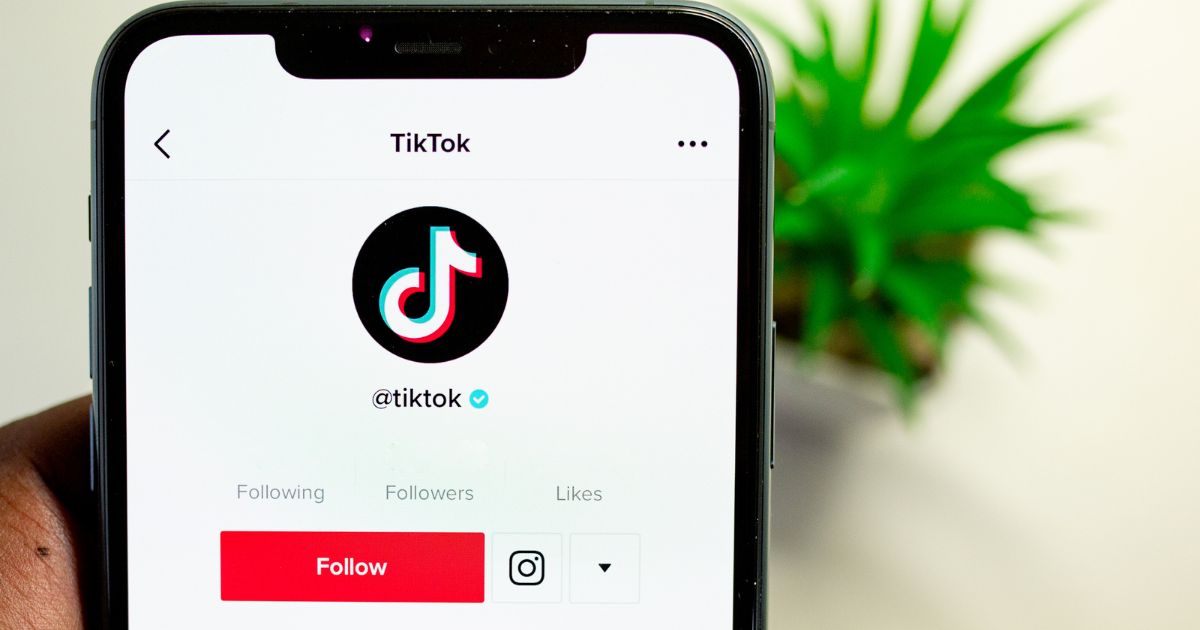
In today’s digital age, social media platforms play a crucial role in brand building for travel and tourism businesses. From Instagram to Facebook, Twitter to TikTok, these platforms offer unparalleled opportunities to showcase your travel experiences, engage with your audience, and amplify your brand message and marketing campaigns. In this modern tourism landscape, it’s important for tour operators to know how to harness the power of social media to create meaningful connections with their stakeholders and attract new customers.
Harnessing the power of testimonials and influencers
Testimonials and influencers can be powerful assets in building credibility and trust for your travel brand. Positive reviews from satisfied customers and endorsements from influential personalities can significantly impact the perception of your business and influence potential customers to book with your travel and tourism business. By exploring strategies for soliciting and leveraging testimonials, as well as collaborating with influencers you can amplify your strong brand reach and engagement.
Make a stellar start with your branding in tourism marketing
A strong, consistent brand can be one of your most valuable assets when running a tour and activity business. If you’re currently building your brand in the tourism industry, then Rezdy makes it simple to create a professional website, gain bookings via your network, and grow your reservations.
A reservation software like Rezdy equips your business with advanced tools such as real-time availability viewer, automatic guest communication, integration to various payment gateways, and further boosts automation within your business’ operations. Furthermore, Rezdy offers distribution solutions that connect you with the industry’s biggest resellers such as OTAs, local travel agencies, or even other tour and activity operators – so you can get your business out there. Rezdy Channel Manager is a distribution platform specifically catered for the tourism industry; connecting operators with access to over 25,000 active resellers worldwide.
Ready to build your brand with Rezdy? Book a free demo , or register for a FREE 21-day trial today.
If you enjoyed this article then make sure to follow the Rezdy blog . There are a lot of marketing tools and tour operator tips designed with businesses like yours in mind.
Start free trial
Enjoy 21 days to take a look around and see if we are a good fit for your business.
No obligations, no catches, no limits, nada
Marketing Basics

What’s new with Google Analytics 4? A guide for tour operators

How to get the most out of your blog as a tour operator
- Their Choice
- Choose to Lead
- Tomorrow’s Choices, Today
- Show Me the Data
- Our mission
- Let’s collaborate
The place to be: lessons in branding from the tourism & travel industry

- The place to be: lessons…
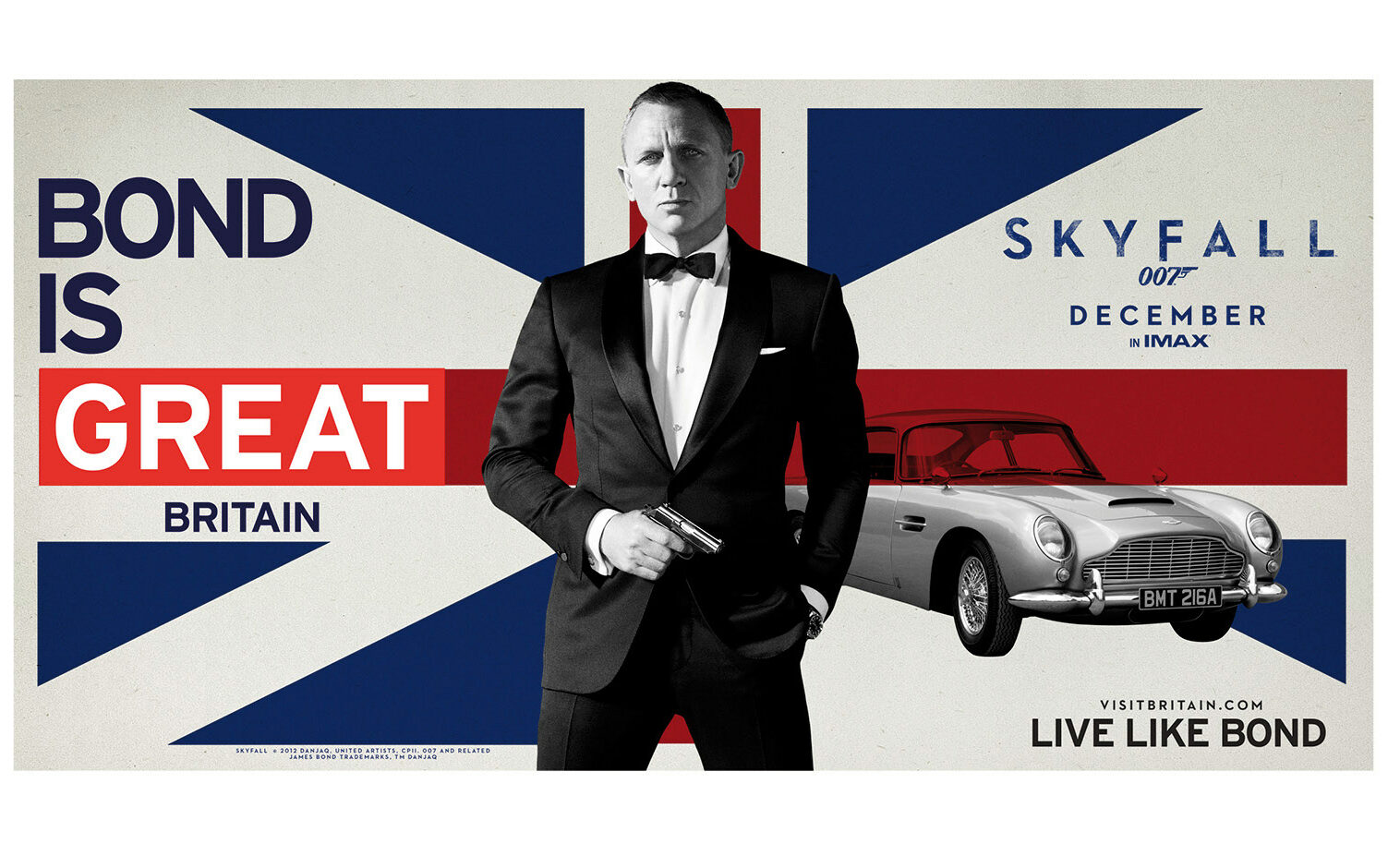
Imagine you’ve just spent the day shopping on Oxford High Street. You take a black cab to Mayfair for afternoon tea at Claridge’s. You have tickets to a show at the West End later that evening, but you stop by for a pint of beer at one of the many pubs named after William Shakespeare. The air is just a bit damp from the rain, and the smell of fish and chips wafts through the air.
You don’t need to have visited London to know which city I was describing. The city’s destination brand is universally strong and recognisable.
What is destination branding, and why is it vital to the economic growth of a place?
According to Tom Buncle, former Chief Executive of Visit Scotland and current Managing Director of an international tourism consultancy: “Destination branding is about identifying the destination’s strongest and most competitively appealing assets in the eyes of its prospective visitors, building a story from these that makes the destination stand out above its competitors, and running this narrative consistently through all marketing communications.”
In other words, a destination brand cannot be created . It is up to tourist boards and destination marketing organisations to identify their destination’s best assets in order to invoke certain feelings, values, cultures, and the overall mindset that people experience when visiting a place.
It also means that people in the destination play a part in contributing to the tourism brand values, experience, reputation, and mindset. Particularly, those in the front-line service industry, which is why the tourism industry is so vital to the economy. It creates customer loyalty and trust, rendering travellers an everlasting impression that could make or break a brand, and in turn, it provides jobs to the workforce.
In the World Travel & Tourism Council (WTTC) annual report on the economic and employment impact of Travel & Tourism for 2019, the sector experienced 3.5% growth, higher than the global economy growth (which reported 2.5% growth) for the ninth consecutive year. Other topline results include:
- US$8.9 trillion contribution to the world’s GDP (US$2.0 trillion in Europe)
- 10.3% of global GDP (9.1% in Europe)
- 330 million jobs, 1 in 10 jobs around the world
- 1 in 4 jobs created by the sector over the past five years
- US$1.7 trillion visitors exports (6.8% of total exports, 28.3% of global services exports)
- US$948 billion capital investment (4.3% of total investment)
If place branding is so important, how do destinations successfully market their brand to make an everlasting impact?
To tackle this question, we will explore some examples of brands that have successfully marketed their destinations and differentiated themselves in this highly competitive industry.
Inspired by Iceland
After the eruption of the Eyjafjallajökul volcano in 2010, Iceland’s reputation as a tourism destination plummeted . Unfortunately, the news of this devastating event was so widespread that the economy was not expected to recover without intervention.
To encourage visitors to consider Iceland as a viable tourism destination, the Icelandic government, along with partners and stakeholders in the travel industry, launched the “Inspired by Iceland” brand. The idea involved a rebrand and an engaging campaign to remind travellers that this beautiful destination was still worth visiting . One of the first campaigns to be released soon after the eruption was Iceland Hour. The campaign leveraged Iceland’s best assets, including local residents and celebrities, to help raise awareness and share stories of positivity. Stories erupted on social media (no pun intended) leading to a reported 22 million testimonials within 10 weeks of launching and has allowed the country to emerge from devastation to triumph. The result was so successful that they saw an ROI of 61:1 with a renewed interest in the country as a desired tourism destination .
Now with the pandemic, the brand continues to use various ways of communicating their best assets through humour, positivity and personality with the Joyscroll campaign and LooksLikeYouNeedIceland campaign hashtag so that when travelling can be safe and normalised again, Iceland would be top of mind for travellers.
Visit Britain
When destination marketing organisations and tourist boards are planning their brand strategy, it’s important to look within their offerings and to be consistent with their core values .
The Love Great Britain campaign focused on culture, heritage, sport, music, nature, food, and shopping. It even partnered with the James Bond movie Skyfall for cross-promotion calling it ‘“Bond is Great Britain” leveraging the legacy of the London Olympics in 2012. A separate page was created to showcase all the iconic landmarks and locations in the movie, giving travellers and fans of the movie franchise a complete tour guide. When it comes to tourism branding, team up with something or someone iconic and globally renowned, even if it is a certain fictional, dashing secret agent.
Visit Britain collaborated once again with another celebrity figure’s upcoming movie release in 2014. The “Paddington is Great” capitalised on Great Britain’s loveable bear and invited visitors to “see Britain through Paddington’s eyes.”
Super, Natural British Columbia
For the past 30 years, British Columbia has used the slogan, “Super, Natural British Columbia” in their marketing campaigns. The brand promises that “from massive mountain ranges and windswept beaches to rainforests overflowing with life, discover how BC’s diverse landscapes shape our people and culture.” Since the slogan has proven the test of time and continues to resonate strongly with the brand’s core image as a popular destination for nature lovers , they have only made visual updates to the artwork and font. With nature and the love for the outdoors being at the core essence of their brand, the custom font personifies and invokes their brand promise: “wild at heart”.
Paris Je T’aime
When examining best practices in tourism branding, one cannot forget to mention the city of romance that is Paris. The “City Brand Barometer 2020” conducted by branding consultancy Saffron, showed that even with the global pandemic, Paris still ranks at the top of the list of desired destinations to visit , thanks to the strength of their brand. Further, the ranking showed London and Tokyo following closely behind in top city brands. The study was created to assess which global cities have built the strongest brands to attract tourists and why. According to Jacob Benbunan , CEO of the branding consulting firm Saffron, “This is the perfect time to work on brand. Of course it is a means to an end. It cannot neutralise the effects of Covid, we may very well have to prepare for a longer term reality of life with Covid, and brand can help cities to be relevant to tourists in the new normal.” To achieve such a high ranking, Paris had to not only already be one of the best-known cities in the world, it also had to embrace its existing reputation as a popular tourist destination with attractions and a rich local culture. For centuries, the French capital has been the global hub for culture, travel, fashion, art, and commerce where it continues to be influential. With 41 World Heritage Sites, it scored highly for accessibility to cultural venues seeing 9.2 million visitors to the Louvre and 7 million visitors to the Eiffel Tower each year .
Essential Costa Rica
One of the top destination branding success stories, Costa Rica has propelled itself on to the global stage as the Best Place Brand of the Year by the City Nation Place Global Forum in 2019. The success of the country’s branding has revolutionised the world’s perception of Costa Rica, thanks to their brand strategy that focused on growing awareness and harnessing the talents of the Costa Rican people . Daniel Valverde Bagnarello, Country Brand Director explains that Essential Costa Rica refers “to a small, concentrated country, full of a unique added value through its talented people.” The slogan maintains that the people of Costa Rica are “the essence” . Since the success of the initiative, they continue to focus on growing their economy from within by seeking partnerships with tourism businesses, working with local stakeholders and incorporating skills and talent of its people that align with the country’s brand messaging, which includes their established reputation for eco-tourism and natural beauty .
In difficult and uncertain times, it is vital to these brands to evolve with new tourism trends but to also stay consistent and resilient with brand building.
The travel and tourism sector is one of the largest and fastest growing industries in the world that contributes significantly to economic growth . In difficult and uncertain times, it is vital to these brands to evolve with new tourism trends but to also stay consistent and resilient with brand building. By continuing to do so, destination brands can build up their personality, voice and perception in the world .
This industry is in it for the long haul. A strong tourism brand can tell us how their place is different from the competition and what unique values they have to enrich your experience.
When travel for leisure can be safe again, I have a few ideas of where I’d like to travel. Do you?
- #LooksLikeYouNeedIceland

Author: Shirley Lui
Shirley Lui works in Marketing, Recruitment and Admissions at ESCP’s London campus. Prior to joining the Higher Education sector, she spent 8 years working as the Manager of Marketing and Creative Strategy at a Destination Marketing Organisation in Canada.

License and Republishing

The Choice - Republishing rules
We publish under a Creative Commons license with the following characteristics Attribution/Sharealike .
- You may not make any changes to the articles published on our site, except for dates, locations (according to the news, if necessary), and your editorial policy. The content must be reproduced and represented by the licensee as published by The Choice, without any cuts, additions, insertions, reductions, alterations or any other modifications. If changes are planned in the text, they must be made in agreement with the author before publication.
- Please make sure to cite the authors of the articles , ideally at the beginning of your republication.
- It is mandatory to cite The Choice and include a link to its homepage or the URL of thearticle. Insertion of The Choice’s logo is highly recommended.
- The sale of our articles in a separate way, in their entirety or in extracts, is not allowed , but you can publish them on pages including advertisements.
- Please request permission before republishing any of the images or pictures contained in our articles. Some of them are not available for republishing without authorization and payment. Please check the terms available in the image caption. However, it is possible to remove images or pictures used by The Choice or replace them with your own.
- Systematic and/or complete republication of the articles and content available on The Choice is prohibited.
- Republishing The Choice articles on a site whose access is entirely available by payment or by subscription is prohibited.
- For websites where access to digital content is restricted by a paywall, republication of The Choice articles, in their entirety, must be on the open access portion of those sites.
- The Choice reserves the right to enter into separate written agreements for the republication of its articles, under the non-exclusive Creative Commons licenses and with the permission of the authors. Please contact The Choice if you are interested at [email protected] .
Individual cases
Extracts: It is recommended that after republishing the first few lines or a paragraph of an article, you indicate "The entire article is available on ESCP’s media, The Choice" with a link to the article.
Citations: Citations of articles written by authors from The Choice should include a link to the URL of the authors’ article.
Translations: Translations may be considered modifications under The Choice's Creative Commons license, therefore these are not permitted without the approval of the article's author.
Modifications: Modifications are not permitted under the Creative Commons license of The Choice. However, authors may be contacted for authorization, prior to any publication, where a modification is planned. Without express consent, The Choice is not bound by any changes made to its content when republished.
Authorized connections / copyright assignment forms: Their use is not necessary as long as the republishing rules of this article are respected.
Print: The Choice articles can be republished according to the rules mentioned above, without the need to include the view counter and links in a printed version.
If you choose this option, please send an image of the republished article to The Choice team so that the author can review it.
Podcasts and videos: Videos and podcasts whose copyrights belong to The Choice are also under a Creative Commons license. Therefore, the same republishing rules apply to them.
Recommended articles

The great office working dilemma: how to manage hybrid work effectively
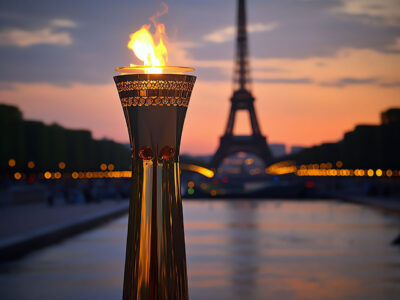
How can sport inspire managers to stimulate collective intelligence?
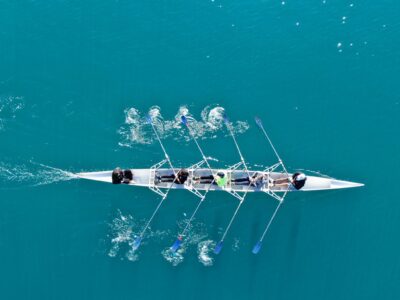
How to identify the right talents and passion for better collaboration
Sign up for the newsletter, sign up for the newsletter.
Get our top interviews and expert insights direct to your inbox every month. The choice is yours, but we don't think you'll regret it.

- Get in touch
- Visit our blog
What tourism businesses need to know about destination branding
Brand and identity.

- Recent Posts
- The allyship journey: Gathering settler support for Indigenous-led tourism - 9 April 2024
- Sustainable solutions: The net-positive-energy lodge inspiring Queenstown Lakes to reach carbon zero - 23 January 2024
- Changemakers live here: Lessons from 3 more places that inspired us this year - 12 December 2023
11 May 2018
0 comments(s).
Michael Eisner, ex-CEO of Disney, once said, “A brand is a living entity – and it is enriched or undermined cumulatively over time, the product of a thousand small gestures”.
Destination brands live and breathe through ongoing collaboration. Thousands of small actions and conversations shape the larger story that makes a place what it is.
Local tourism operators may not always step back to look at the bigger brand story. Those who need to focus on their next 50 dinner reservations or hotel room nights might not realize their integral role within your destination’s brand, or how that story helps their guests decide to visit in the first place.
It can be hard to link brand development directly to revenue for individual businesses. But to find success, a destination needs to come together in a unifying vision that connects all tourism experiences and creates a compelling and unique experience.
Destination marketing organizations (DMOs) help people contribute to the brand story. “Your DMO can set a direction or cast a vision, but if you want people to buy-in, you have to bring them along. And it takes time to do that well,” says Sarah Prud’homme, Strategic Consultant at Destination Think.
Why should tourism businesses get involved?
DMOs need to orchestrate community involvement to help everyone succeed.
But busy people might reasonably ask why providing their valuable time, attention and input are worthwhile.
Here are 5 things tourism businesses and residents need to know to understand the value of destination-wide brand collaboration.
1. The success of your destination depends on collaboration toward common goals.
Individual experiences impact a visitor’s brand perception. DMOs can coordinate businesses to improve the customer journey and help visitors have an experience worth travelling for and raving about.
Different businesses have different roles to play. Your local museum might be one reason that guests visit, but those people also need to find somewhere to eat, sleep, and add activities to fill their itinerary. Yes, some businesses compete, but there are many more opportunities for cooperation.
Collaboration doesn’t stop with the visitor experience. Some tourism businesses work together to find stable financial support for destination marketing. The Tourism Business Improvement District (TBID) is one model. Facing public funding shortages for their DMOs, hotels in some destinations have united to create a TBID and secure revenue through a bed tax. This approach to funding began in the United States (see Visit Napa Valley ) and is being replicated overseas by organizations like Visit Inverness and Loch Ness .
Businesses that understand their reliance on the community can help strengthen their destination’s reputation by getting involved in collective goals, no matter their particular role in the visitor experience or destination management.
As a rising tide lifts all boats, a successful destination helps its businesses succeed together.
2. Destination branding requires long-term thinking.
Promotional activities often focus on the short-term. But your destination brand is designed for success over the long term.

William Bakker, Chief Strategist at Destination Think
Think’s strategists have found that operators are sometimes skeptical of destination brand processes because they don’t see the immediate impact it will have on their businesses.
“Branding is somewhat abstract, so it’s hard for people to understand its value,” says William Bakker, Destination Think’s Chief Strategist. “It’s often a beauty contest about logos and taglines. The reality is that a brand strategy is much more than that”.
“Making a direct correlation to revenue is tough. But consider some of the world’s best-known brands like Apple or Coca-Cola. They are valuable because they have built customer loyalty and trust over time. That trust and reputation make every new product from those companies more credible and appealing.
“Likewise, a strong tourism brand will increase the value and reputation of the tourism product – the experiences available to visitors within the destination.”

Frank Cuypers, Senior Strategic Consultant at Destination Think
Frank Cuypers, Senior Strategic Consultant at Destination Think, agrees that branding isn’t about paying next month’s bills. “A successful destination brand will allow a destination to gradually generate more interest and more revenue from the right visitors, year over year.”
Nashville Convention & Visitors Corp (NCVC) discovered this first hand after developing the Music City USA brand with its stakeholders in 2003. The city-wide focus on Nashville’s musical identity has paid off in record-setting visitation numbers.
- Does a brand make a difference? Nashville refined “Music City” to the tune of 60+ straight months of growth and counting.
Sometimes a brand’s impact is also easy to see in times of crisis. Tourism in Paris was able to rebound after declining following the terrorist attack of November 2015 because of the strength of the city’s overall brand.
“They faced these attacks, and in no time, they recovered,” says Cuypers. “Why? Their brand isn’t about safety, it’s about the positive experiences they continue to provide.”
The destination’s long-term reputation was strong enough to overcome the understandable safety concerns in the immediate aftermath.
“In times of adversity, people do not choose traditional marketing campaigns, they choose branding. They go back to the basics, to who they are.” Destinations become resilient by investing in a brand built on identity.
3. Aligning operator origin stories with a destination brand creates a strong destination story.
Operators also express their business’ core identity through a destination brand story. Business owners can ask themselves four questions to find their role within the destination brand:
- What is the destination brand? This stems from your destination’s identity, or Place DNA® . It’s the overarching story your destination’s people are telling and experiencing.
- What is my business’ origin story? Your business has its own DNA. How did it begin? What are its values? What experiences does it provide to visitors? We call this an origin story.
- How does the origin story overlap with the destination brand? This is your chapter within the destination’s story. With this question, you can support the destination while remaining true to your business’ unique experiences.
- How can you support the destination brand? Businesses can often start to contribute to the larger story in small ways.
For example, Tourism Vernon’s Place DNA® process revealed that being a four-season destination was an important strand of the Vernon story. Local businesses like hotels, for example, can begin to participate in small ways by using visuals that reflect the four seasons.
“In a subtle way that doesn’t involve too much effort, we’re already now moving towards creating a more cohesive experience,” says Bakker.
4. Destination brands can help operators focus their limited marketing budgets.
The destination brand can also help businesses save time on promotion. Where appropriate, owners can access their DMO’s media assets like images and videos that are made available for common use. This way, they automatically create alignment with the destination brand and use the work that’s already been done by the destination brand to articulate the unique selling propositions (USPs) that relate to location.
Quick tip for operators: Ask your DMO what brand outputs it has available and under what circumstances you can use them.
5. DMOs want success for everyone in the destination.
Most importantly, keep an open mind during the destination branding process. Destination brand managers and strategists are passionate about travel and the place where they live. They navigate challenging business problems to make the whole community a better place to live and work, and they thrive on positive cooperation with the community.
As Bakker says, “Avoid being skeptical of your DMO’s strategy. Instead, learn to collaborate with and support the staff. They have your short and long-term interest in mind in everything they do.”
Business owners: Read William Bakker’s 6 things tourism businesses should know about their DMO.
DMO executives: Find out how Tourism Calgary used a team-wide, collaborative process for destination branding and strategic planning . Contact us to learn how we can help your DMO.
Featured image credit: Adobe Stock
Submit a Comment Cancel reply
Your email address will not be published. Required fields are marked *
Save my name, email, and website in this browser for the next time I comment.
Submit Comment
RELATED POSTS

The allyship journey: Gathering settler support for Indigenous-led tourism
Apr 9, 2024
“Right now, the poorest people in the region – the Indigenous people – are subsidizing the conditions that enable...

Why wilderness is a myth: Tribal Parks Guardians and the language of respect
Apr 2, 2024
“Taaquuqḥłiʔin. Let us speak truthfully and act honourably. Let us learn the history of this place and its people,...

Tribal Park Allies: A blueprint for ethical travel everywhere
Mar 26, 2024
“What is unique is that you have the ability to come to Tofino and ethically travel. I think that's something that the...
You’ve found your partner for destination marketing
We work with the most innovative tourism boards in the world to create a vision for each of their destinations, solve business challenges and execute brilliant, integrated campaigns. The expertise we apply to that work is shared in the articles published here and in our DMO Matters newsletter.

Consent* Destination Think may store my data and contact me by email.*
Thank you! You will receive an email to confirm your subscription.
We value and respect your privacy. Click to read our privacy policy.
8 Tips for Successful Destination Branding
Related Articles
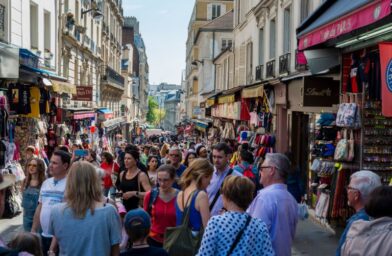
Stay updated with Regiondo by signing up for our Newsletter

Get a personalized demo or create your free account now
Take your business to the next level with Regiondo - it's free to get started and you don't need a credit card.
Destination Branding
In destination marketing, branding is not about logos, it involves a holistic 360 degree approach to crafting, developing and nurturing a unique identity for the destination according to key elements such as the destination proposition, heritage and values.
In destination marketing, branding is not about logos, it involves a holistic 360 degree approach to crafting, developing and nurturing a unique identity for the destination according to key elements such as the destination proposition, heritage and values. Once established, the destination brand is the foundation of all marketing activities designed to promote the destination and attract new visitors; content and messaging should always be aligned with this in mind. The destination brand is absolutely pivotal to what is communicated to the world.
It is important to acknowledge this concept before starting to talk about the brand because branding is not only about giving a name and colour to a product or place, it is the sum of multiple elements all converging into one narrative which we call the brand.
Destination branding is driven by three main factors, which represent the fundamentals of a destination brand: reputation, identity and perception.
- Reputation is the sum of the beliefs or opinions about the destination, it needs to be built, protected, maintained and changed, if needed, over time.
- Identity has to be driven by authenticity, unique selling points of the destination, consistency and strong personality.
- Perception is mostly made of immaterial experiences, even though material experiences matter as well, and it is subjective, in the mind of consumers.
We explore this in further detail in Stage 4 of our Transformation Series: Shaping the Brand .
In terms of destination marketing, it is all about the brand story and creating one that really resonates with your core audience. First and foremost, this is to secure competitive differentiation in an already saturated marketplace. As the travel industry continues to change at an unprecedented pace, alongside constantly evolving traveller behaviour, the impact of sustainability and living in a hyper-connected world, a strong brand means destinations have the ability to stand the test of time and remain competitive, while still being innovative, dynamic and agile in their approach.
There are many fantastic examples of destinations that have established a compelling brand narrative through different means from powerful storytelling and destination-wide collaboration to a complete destination re-brand.
Ticino Turismo - Rebrand

In 2018, Ticino Turismo , the official DMO of the canton, embarked on a great innovation journey that led them to a complete rebranding after 36 years. The new brand considered many different elements and the process of design thinking was used as a means to co-create the new narrative and branding, collaborating with stakeholders from all the provinces of the region. This was a total digital transformation, and the many different micro-experiences, stories and emotions within the destination are reflected in the new brand you see today.
Check out the full case study.
Destination canada - brand evolution.

Gloria Loree, Vice President of Global Marketing at Destination Canada , joined us at #DTTTCampus this year for a truly fantastic talk about how the DMO has evolved from a destination brand to a passion brand , with insights into the brand journey of this transformation, alongside how to successfully keep up with the speed of change and ever-changing traveller. The strategy shifted from telling people what to do via online ads, to matching target travellers’ personal passions to Canadian experiences, focusing on signature experiences and storytelling.
Watch the talk here .
Singapore - brand stories.
Here at the #DTTT, we consider Singapore Tourism Board as one of the DMOs that continuously innovate its brand with a strategy that focuses on local people, their stories and passions, delivering these powerful messages through effective digital strategies.
Singapore Tourism Board also shifted its strategy to focus on promoting passion, creating passion ambassadors and tribes. A visitor-centric approach, connecting visitors to the destination through personalised, authentic stories based on strong brand values.
Here’s the full case study .
Eindhoven - brand collaboration.

Traditionally, most companies involved in the travel space operated in silos, whereas now we are seeing really strong collaboration across the board, with the customer journey at the very core of this. Whether that is a collaboration with airlines, locals or the whole entire city.
At #DTTTGlobal in 2018, Eindhoven shared its dynamic, all-inclusive strategy, where the DMO created one, open-source brand meaning the brand logo was available and free to use and adapt by anyone in town!
Using the city's strategic advantage of creative and tech talent, and focusing on three key domains of technology, design and knowledge, Eindhoven brought together a team from all different industries within the city to create a truly dynamic identity, one that resonates with key audiences and everyone who lives there.
You can watch the full talk with Peter Kentie, Managing Director of Eindhoven365 here .
Continue reading....
Restricted Access
Subscribe to our newsletter.
Get featured content and updates on our up and coming events.


Destination Branding
Destination Branding: Every destination is different. Transforming the tourism destination into attractive brand is a relatively new concept. The various changes in the value system, for instance, in segmenting target groups, new dynamics of communication and media and orientation towards sustainability is to be revisited for establishing the brand.
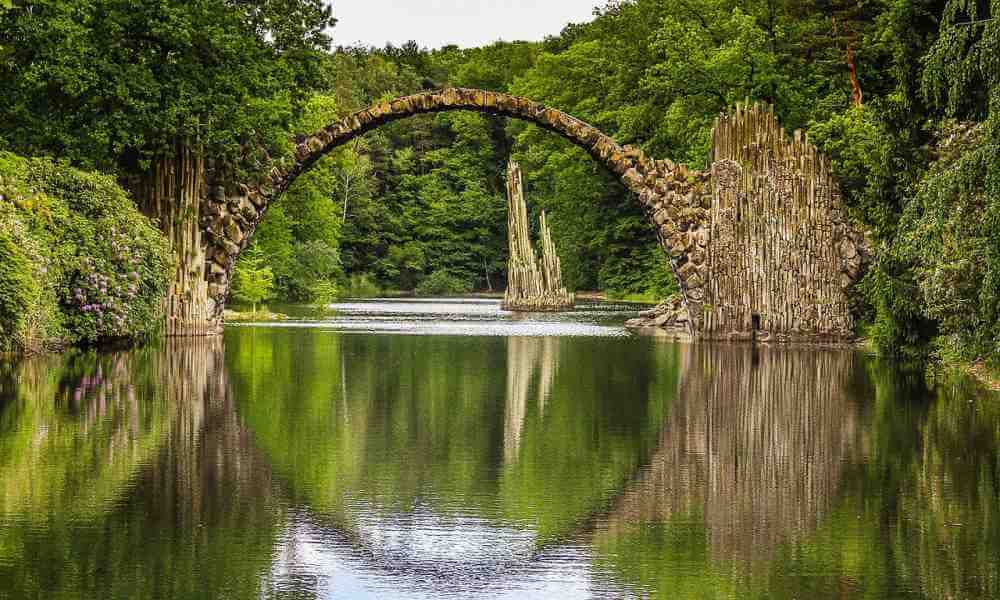
Since the beginning of the tourism, the packages offered remain differentiated and attractive in terms of market supply, price and communication contributing in elevating the world tourism. The customer demand for the everlasting thrill cue the need to redesign the package to make a difference for the mesmerising unparalleled experience. The brand management aim to offer the combination of its’ own superordinate performance and the people expectations about their life shortages (dreams, desire, hopes etc.).
Concept of Destination Brand
Destination: The word ‘Destination’ originated from latin word ‘destinare’ means ‘make firm, establish’ that indicate point of disembarkation. A destination may be a geographic area consisting of all the services and infrastructure necessary for the stay of a selected tourist or tourism segment (WTO 1992 or Bieger 1996). Destinations are the competitive units of incoming tourism.
Destination brand is the destination’s essence comprising of core values making it distinct with a competitive edge. It largely depends on the values that the place carries. The story narrated by the place about its historical strength is the attraction represented to the visitors in the form of Destination Brand.
Destination Positioning is the art of developing and communicating meaningful differences between a region’s tourism offerings and those of competitors serving the same target market (Heath & Wall, 1992:115).
“Positioning starts with a product. A piece of merchandise, a service, a company, an establishment , or maybe an individual . But positioning isn’t what you are doing to a product. Positioning is what you are doing to the mind of the prospect. That is you position the merchandise within the mind of the prospect.”
“Positioning is that the act of designing the company’s offering and image to occupy a particular place within the target market’s mind.” (Philip Kotler. Marketing Management: The Millennium Edition).
A four step model was proposed by Heath & Wall in 1992. The steps are as follows; Step 1: Assess the current position in comparison to its competitors. Step 2: Select the desired position in which destination to be developed and communicating the same. Steps 3 and 4: Planning and implementation of the strategy is challenging as to reposition a destination. Heath and Wall have quoted an instance of converting a tourism region into a region rich in cultural heritage. How the region should be communicated after developing the selected area to be projected as heritage (Heath and Wall, 1992: 120).
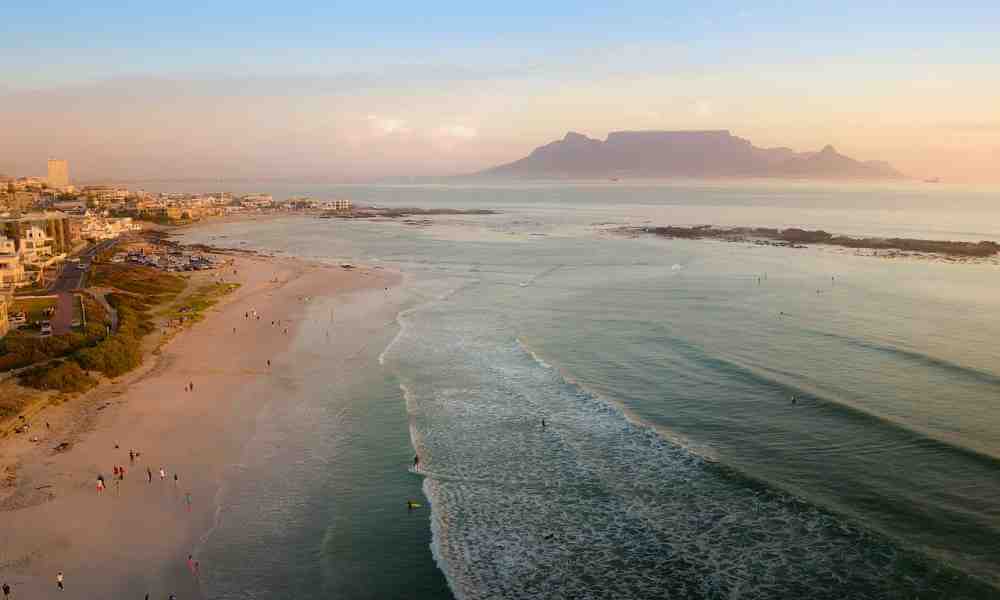
Branding the Destination positioning
“A brand may be a name, term, sign, symbol, or design, or combination of them, intended to spot the products or services of 1 seller or group of sellers and to differentiate them from those of competitors.” (Kotler, Philip. 2000).
A brand is a combination of both functional and non-functional meaning uniquely engraved in the mind of the tourists. “Branding is probably the foremost powerful marketing weapon available to contemporary destination marketers” (Morgan and Pritchard, 2002, p. 11)
Destination Marketing Organizations (DMO) referred destination branding as the promotion and marketing of their place to a specific audience of business or leisure travellers. Destination branding is the process of developing a unique personality and image differentiating from all competitors. Destination branding is “selecting a uniform brand element mix to spot and distinguish a destination through positive image building” (Cai, 2000)
Destination branding is to collaborate with all the associated industry of that place to offer a pleasing long lasting experience to the tourist. The aim is to capture the essence of the place and deliver the package with additional values to differentiate and sustain the competition. A destination brand is not merely an advertising tagline, logo, color scheme or, attractive websites; it’s the way of communicating the identity, differentiation points, a uniformity among destination partners and combination of symbol, design, name and slogan. The differentiation created should be consistent with the perception keeping the emotional appeal of the tourist segment.
The brand destination winning strategies are the projection of emotional richness, the conservational value with rhyme of difference which passes a strong message of “A place worth visiting” (Morgan, Pritchard & Pride, 2002). The brand cycle should be revealed in S-curve through a series of stages, Weinreich (1999: 25-6). Every place is born small, which follow their visitors who are the trendsetters, fewer but the opinion-formers for the construction of the place in a meaningful way. Slowly the destination becomes famous and tourist switches in search of next stop.
The better known places sometime lose their brand values in terms of when it becomes irrelevant to the tourist by losing its appeal. Familiarity snatches the attractiveness and makes the destination fade. If badly destructed, need to revisit the destination brand values and revitalise the core values.
Destination Branding is the most challenging event of the brand managers. It is the holistic approach to develop a destination for tourism. The branding is highly dependent upon the tourists who sign in as trendsetters and leave their signature for further development. The destination has the cultural attraction presented in the form of rhyme and the emotional appeal to form the bonding and develop the loyalty of the visitors. The image is portrayed to reflect all the beauty of the destination. The positioning of the destination is done to present a distinct unique image of the place in the mind of tourists that helps in destination branding.
You may also read this Destination Positioning
You might also like.

Medical Tourism

Main Tourist Centers of India

To read this content please select one of the options below:
Please note you do not have access to teaching notes, destination brand images: a business tourism perspective.
Journal of Services Marketing
ISSN : 0887-6045
Article publication date: 1 January 2005
Most studies of destination brand images have been conducted from the perspective of the leisure tourist. This study identifies brand images from a business tourist perspective (people visiting destinations for business meetings, incentive events, conferences and exhibitions) and tests their relationship with perceived quality and commercial criteria.
Design/methodology/approach
Data on the brand image attributes associated with 15 UK destinations promoting themselves as business tourism centres were collected via repertory grid analysis from a sample of 25 organisations using business tourism facilities. A self‐completion questionnaire was used to measure managers’ ratings of the perceived quality of each destination and the commercial criteria used to select a destination. The data were analysed using content analysis, exploratory factor analysis and correlation analysis.
The content analysis identified eight clusters of brand image attributes. Subsequent factor analysis identified three underlying dimensions – overall destination attractiveness, functionality, and ambience. While all three were correlated with perceived quality, commercial criteria were dominated by a destination's functional rather than ambience attributes.
Originality/value
The results of the study provide a more informed and systematic basis on which to develop a destination's business tourism positioning strategy by providing a framework for selecting relevant brand image attributes.
- Brand image
- Business travel
- United Kingdom
Hankinson, G. (2005), "Destination brand images: a business tourism perspective", Journal of Services Marketing , Vol. 19 No. 1, pp. 24-32. https://doi.org/10.1108/08876040510579361
Emerald Group Publishing Limited
Copyright © 2005, Emerald Group Publishing Limited
Related articles
We’re listening — tell us what you think, something didn’t work….
Report bugs here
All feedback is valuable
Please share your general feedback
Join us on our journey
Platform update page.
Visit emeraldpublishing.com/platformupdate to discover the latest news and updates
Questions & More Information
Answers to the most commonly asked questions here

Business tourist flow from India to Moscow on the rise: Evgeny Kozlov
Business + Leisure Travel and MICE 2023 opened on 29 th of September with a keynote speech from the Chairman of The Moscow City Tourism Committee, Evgeny Kozlov. In his speech, the Chairman spoke about the potential for MICE and business tourism in Moscow and the growing number of Indian businessmen who are choosing Moscow as their preferred destination for business events.
Evgeny Kozlov highlighted that the number of business tourists is expected to grow in the coming years. One of the factors supporting the growth of interest from Indian businessmen was the launch of electronic visa program. From August 1, 2023, it has become easier for Indian citizens to organize a trip to Moscow – they can come simply by applying for an electronic visa. The validity period of an e-visa is 60 days from the date of its issuance. You can stay with it in Russia for 16 days. An e-visa has several advantages over a traditional visa. To obtain it, you do not need to go to consulates or embassies, and the only documents required are a digital photograph of your face and a scan of the page with your passport data.
“Before the pandemic, the tourist flow from India grew by 12-15 percent annually. Now we are on the road to recovery – all the conditions have been created for this. Every year hundreds of international exhibitions, forums, congresses and conferences are held in Moscow. Over the past year, about 3.5 million people visited the capital for business purposes and a significant share of them are from India” – he said.
Evgeny Kozlov emphasized that Moscow is a growing hub for international business events and Indian businessmen could benefit from attending these events to expand their network and explore potential business opportunities. The Moscow MICE Ambassadors program, which also premiered at the exhibition, aims to promote Moscow as a preferred destination for business tourism, and Indian businessmen who have completed the program can serve as valuable resources for organizing conferences and events in Moscow. Furthermore, Moscow offers a range of world-class facilities and services for business travelers, including conference centers, hotels, transportation, and sightseeing. He also mentioned that Moscow’s rich cultural heritage and vibrant nightlife could provide Indian businessmen with unique experiences that could enhance their overall business trip.
In conclusion, Evgeny Kozlov expressed his optimism for the future of MICE and business tourism in Moscow. Thus, in October 2023, Moscow will host the largest MICE Congress in Russia. Among the participants are 14 countries, including Indians. The event will provide a platform for businesses in the travel and tourism industry to showcase their products and services.
Since you're here...
...there are many ways you can work with us to advertise your company and connect to your customers. Our team can help you design and create an advertising campaign
We can also organize a real life or digital event for you and find thought leader speakers as well as industry leaders, who could be your potential partners, to join the event. We also run some awards programmes which give you an opportunity to be recognized for your achievements during the year and you can join this as a participant or a sponsor.
Let us help you drive your business forward with a good partnership!
Yes, contact me I want to download the media kit
Comments are closed.
LATEST STORIES

IWTA speaks with Mary Li, Founder and CEO, Atlas
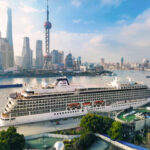
Viking announces new Mongolia extension for China voyages starting in 2024

Cathay Pacific to bring even more experience enhancements designed with customers in mind

Pachmarhi: The UNESCO Biosphere Reserve
Welcome, Login to your account.
Sign in with Google
Powered by wp-glogin.com
Recover your password.
A password will be e-mailed to you.
Welcome back, Log in to your account.
SIGN UP FOR FREE
Be part of our community of seasoned travel and hospitality industry professionals from all over the world.
- LOGIN / SIGN UP
- Middle East
- UK & Europe
- USA & Canada
- Hospitality
- HR & Careers
- Luxury Travel
- MICE (Meetings, Incentives, Conferencing, Exhibitions)
- Travel Tech
- Travel Agents
- Airlines / Airports
- Conferences
- Cruising (Ocean)
- Cruising (River)
- Destination Management (DMC)
- Hotels & Resorts
- Hotel Management Company
- Hotel Technology
- HR / Appointments
- Meetings, Incentives, Conferencing, Exhibitions (MICE)
- Travel Agents (all)
- Travel Technology
- Tourism Boards
- Industry appointments
- Travel Bloggers
- Podcasts – Features
- How to join
- RSVP Portal
- Event Photos/Videos
- Competitions
- Search for Jobs
- Destination NaJomtien BanAmphur BangSaray *NEW*
- จุดหมายปลายทาง นาจอมเทียน หาดบ้านอำเภอ บางเสร่ *NEW*
- South Australia Reward Wonders *NEW*
- Ponant Yacht Cruises and Expeditions
- Encore Tickets (Chinese Guide)
- Affordable Luxury in Thailand by Centara Hotels
- Rising Above the Oridinary by Conrad Bangkok
- The Best of Thailand
- Who is IWTA
- Philippines
- Recommend Someone
- Recommend yourself
- Awards site
- Be a Sponsor
- Nominate Now
- Buy Tickets
- TRAVEL CLUB

Mission Moscow : A Conversation with Evgeny Kozlov
Mr. Evgeny Kozlov, Deputy Head Mayor of Moscow Government and Chairman of the Moscow City Tourism Committee, who has come to the city to attain BLTM, the annual prestigious travel event at the Leela Ambience Convention Centre, Delhi spoke with TW Editor Anirban Dasgupta on his vision and goal with the all-new tourism initiatives in Moscow.
The bond between India and Russia has a long history of culture, literature, love, and of course politics. But recently, there has also been a lot of talk about Gastronomical tourism. Any personal experience with this?
My personal take on the bond between India and Russia stems from my recent experience of trying authentic Indian cuisine in Moscow. I thoroughly enjoyed the spicy flavours of the Curry dish I tried and it left a lasting impression on me. This made me appreciate the cultural exchange between our two countries even more. I believe that Moscow, being a culinary hub, is a great place for people from all over the world, including Indian visitors, to immerse themselves in our rich history and culture. It’s a unique experience that brings people together and showcases the diversity of the gastronomic universe. Moscow has a thriving food scene with various international cuisines to explore, from Chinese to South African and Latin American. This culinary diversity reflects the open-mindedness and curiosity of the Russian people when it comes to trying new types of food. Moscow truly has something for everyone, and I encourage Indian tourists to come and indulge in this gastronomic journey.

How optimistic are the post-pandemic recovery figures?
After the Covid-19 pandemic, we have witnessed a remarkable recovery in tourism in Moscow. In fact, we have been able to restore 90% of the pre-pandemic tourist flow. In the first half of 2023, almost a million foreign tourists visited Moscow, with over 600,000 of them arriving during the summer season. Among the non-CIS countries, China has led the way in terms of tourist traffic, followed by Iran, the United Arab Emirates, Turkey, and India. Prior to the pandemic, India’s tourist flow was steadily growing at a rate of 12-15% annually. Although we faced challenges during the pandemic, we have now put in place all the necessary conditions for a successful recovery. Moscow is known for hosting numerous international exhibitions, forums, congresses, and conferences, attracting approximately 3.6 million business visitors in the past year alone. Among these visitors, India ranks third in terms of foreign business tourists in Moscow. To further promote tourism, we have initiated the MICE Ambassadors training program in India, which aims to assist Indian businesses in exploring opportunities and selecting relevant events in Moscow.
Can you please share your vision for future tourism development in Moscow?
Thank you for asking this question. I have a multi-faceted vision for the future tourism development in Moscow.
Firstly, I believe that tourism should provide a personal and authentic experience for each individual. Therefore, customization of experiences is crucial. For business tourists, we aim to offer special infrastructure facilities that cater to their specific needs and requirements. We are closely collaborating with infrastructure providers to ensure seamless experiences for those visiting Moscow for business purposes. On the other hand, when it comes to leisure or family tourists, we recognize the importance of providing a support system and guidelines for those traveling with their families, especially children. We are working with museums, theatres, and restaurants to customize their services and products to cater to tourists of all ages, including children. Furthermore, I envision rearranging tourism in Moscow to encourage visitors to delve into the history and heritage of our country. A significant part of my tourism goal is to motivate and inspire the youth and younger generations to travel to Russia. This involves providing affordable pricing for accommodations, entertainment, museums, and other attractions.
We are already constructing tailor-made infrastructure that specifically targets the young generation in Russia, and by next year, we plan to extend and promote these offerings to international young visitors as well. By rebranding the image of Moscow as a destination for longer stays, relaxation, and enjoying various facilities, we aim to change the perception that it is merely a transit or stop-over city. Lastly, the beautiful weather in Moscow during the summer months provides an opportunity to create delightful memories for tourists. I want every visitor to experience the sunshine, green landscapes, parks, cafes, restaurants, swimming pools, and sports facilities that Moscow has to offer during this time.
In summary, my vision for the future of tourism in Moscow revolves around creating customized travel experiences for every type of traveller.
How do you prioritize sustainability and responsible tourism practices in the development of business tourism?

How easy or difficult is it to get a Visa for an Indian Tourist at present?
Acquiring a Visa for Indian tourists has become easier with the introduction of the e-visa system. Since its launch in August 2023, more than 30,000 tourists have already utilized this system. The e-visa offers several advantages over traditional visas, such as avoiding the need to visit consulates or embassies. The application process only requires a digital photograph and a scan of the passport data page. The e-visa has a validity period of 60 days from the date of issuance, with a maximum stay of 16 days in Russia. This convenient and streamlined process is available to citizens of 55 countries, including India. Indian tourists are currently ranked third in terms of business travellers from outside the CIS countries visiting Moscow.
Author: Anirban
Share article, related news.

BLTM 2023 showcases top destinations for Bleisure and MICE Travel

École Ducasse Abu Dhabi Studio, in partnership with Erth Hospitality, to open this December
No comment be the first one., leave a reply cancel reply.
Your email address will not be published. Required fields are marked *
Save my name, email, and website in this browser for the next time I comment.
- LIVE DISCOURSE
- BLOG / OPINION
- SUBMIT PRESS RELEASE
- Advertisement
- Knowledge Partnership
- Media Partnership
Business Tourist Flow from India to Moscow is One of the Most Numerous - Evgeny Kozlov
The moscow city tourism committee revealed that indian businessmen are paying ever-growing attention to russia and its capital, as over the last 2 years the mice tourist flow from india has grown to become one of the most numerous groups among all foreign business tourists outside the cis countries. business leisure travel and mice 2023 opened on the 29th of september in new delhi with a keynote speech from the chairman of the moscow city tourism committee, mr. evgeny kozlov..

The Moscow City Tourism Committee revealed that Indian businessmen are paying ever-growing attention to Russia and its capital, as over the last 2 years the MICE tourist flow from India has grown to become one of the most numerous groups among all foreign business tourists outside the CIS countries.
Business + Leisure Travel and MICE 2023 opened on the 29th of September in New Delhi with a keynote speech from the Chairman of The Moscow City Tourism Committee, Mr. Evgeny Kozlov. In his speech, the Chairman spoke about the potential for MICE and business tourism in Moscow and the growing number of Indian businessmen who are choosing Moscow as their preferred destination for business events.
Mr. Evgeny Kozlov highlighted that the number of business tourists is expected to grow in the coming years. One of the factors supporting the growth of interest from Indian businessmen was the launch of the electronic visa program. From August 1, 2023, it has become easier for Indian citizens to organize a trip to Moscow - they can come simply by applying for an electronic visa. The validity period of an e-visa is 60 days from the date of its issuance. You can stay with it in Russia for 16 days. An e-visa has several advantages over a traditional visa. To obtain it, you do not need to go to consulates or embassies, and the only documents required are a digital photograph of your face and a scan of the page with your passport data.
“Before the pandemic, the tourist flow from India grew by 12-15 percent annually. Now we are on the road to recovery - all the conditions have been created for this. Every year hundreds of international exhibitions, forums, congresses and conferences are held in Moscow. Over the past year, about 3.5 million people visited the capital for business purposes and a significant share of them are from India,” he said.
Evgeny Kozlov emphasized that Moscow is a growing hub for international business events and Indian businessmen could benefit from attending these events to expand their network and explore potential business opportunities. The Moscow MICE Ambassadors program, which also premiered at the exhibition, aims to promote Moscow as a preferred destination for business tourism, and Indian businessmen who have completed the program can serve as valuable resources for organizing conferences and events in Moscow. Furthermore, Moscow offers a range of world-class facilities and services for business travelers, including conference centers, hotels, transportation, and sightseeing. He also mentioned that Moscow's rich cultural heritage and vibrant nightlife could provide Indian businessmen with unique experiences that could enhance their overall business trip.
In conclusion, Mr. Evgeny Kozlov expressed his optimism for the future of MICE and business tourism in Moscow. Thus, in October 2023, Moscow will host the largest MICE Congress in Russia. Among the participants are 14 countries, including Indians. The event will provide a platform for businesses in the travel and tourism industry to showcase their products and services.
Moscow City Tourism Committee is the executive body of the Moscow City Government that oversees tourist activities in the capital. The Committee is responsible for legislative initiatives, congress and exhibition activities, and event and image projects. As the brand manager for an attractive tourism image for Moscow, Mostourism constantly analyses global trends, offers Russian and foreign tourists what they want, and also uncovers new opportunities for the capital in terms of interesting and rewarding leisure activities.
Chennaiyin FC end Bagan's eight-match unbeaten run with 3-2 win
Isl: inconsistent chennaiyin look to stun in-form mohun bagan fc, delhi capitals defeat chennai super kings by 20 runs, manchester united-supported five-a-side event to be played in india; chennai leg on apr 6, isl: chennaiyin fc secure thrilling comeback 3-2 win over mohun bagan sg.

President Milei of Argentina to embark on US tour aiming to meet with Elon M...

Mumbai Police track down and retrieve Rs 82.55 lakh lost in cyber attack

Malabar Gold & Diamonds Sets New Annual Turnover Record, Surpassing Rs 50,00...

FACTBOX-US, Japan, Philippines strike deals on defense, investment at leader...
Latest news, rameshwaram cafe blast suspects brought to bengaluru on remand, foreign secretary kwatra meets senior us officials, reviews progress of global strategic partnership, pm modi and president murmu pay tribute to jallianwala bagh massacre victims, supreme court to host 2-day conference on technology, judicial dialogue with singapore.

OPINION / BLOG / INTERVIEW
Sustainable tech: innovations in green computing and energy efficiency, vertical cities: architectural innovations and the future of urban living, the intersection of artificial intelligence, automation, and human contribution, the digital divide in urban areas: addressing connectivity and accessibility, connect us on.
- ADVERTISEMENT
- KNOWLEDGE PARTNERSHIP
- MEDIA PARTNERSHIP
- Agro-Forestry
- Art & Culture
- Economy & Business
- Energy & Extractives
- Law & Governance
- Science & Environment
- Social & Gender
- Urban Development
- East and South East Asia
- Europe and Central Asia
- Central Africa
- East Africa
- Southern Africa
- West Africa
- Middle East and North Africa
- North America
- Latin America and Caribbean
OTHER LINKS
- Write for us
- Submit Press Release
- Opinion / Blog / Analysis
- Business News
- Entertainment News
- Technology News
- Law-order News
- Lifestyle News
- National News
- International News
OTHER PRODUCTS
Email: [email protected] Phone: +91-720-6444012, +91-7027739813, 14, 15
© Copyright 2024

IMAGES
VIDEO
COMMENTS
The most cited article is 'Destination image and destination personality: An application of branding theories to tourism places' (Hosany et al., 2006) with 301 citations, published in Journal of Business Research, which investigates the relationship between destination image and destination personality, concluding that both are related ...
1. Craft your brand story. Every business has a backstory. There's always a reason why a company comes to be. Sometimes, it sparks out of an opportunity, but more often than not, a tourism business starts from passion — passion for adventure, the destination, or the community.
Destination Branding Research Insights. Destination branding research is a comprehensive area that seeks to analyze and understand how specific locations, such as cities, regions, or tourist spots, are viewed by audiences worldwide. It delves into the elements that shape a destination's image and appeal, taking into account its unique culture ...
Introduced by an essay by Simon Anholt on the importance of building a national brand image, the Handbook on Tourism Destination Branding provides a step-by-step guide to the branding process accompanied by strategies for brand management. Case studies are featured throughout the Handbook to illustrate the various concepts, present best ...
Destination branding is a unique way to position a city or country to help it stand out and drive more tourism. Instead of a focus on consumerism or attractions, destination branding aims to shape the perception of a destination using culture, brand values, heritage, landscapes, and experiences to help resonate with a traveler.
In short, aim to: Research competitor names. Keep the brand name short and sharp. Consider how easy the name will be to search for and find online. Include the location within the name, and. Trademark and protect your brand name. Importantly, your brand name should also reflect the unique qualities and experiences your tour or activity business ...
Handbook on Tourism Destination Branding. Published: 2009 Pages: 195. eISBN: 978-92-844-1311-9. Abstract: Tourism has become one of the world's fastest growing economic sectors in recent years. Governments around the world are increasingly recognising the power of tourism to boost their nation's development and prosperity.
It is up to tourist boards and destination marketing organisations to identify their destination's best assets in order to invoke certain feelings, values, cultures, and the overall mindset that people experience when visiting a place. It also means that people in the destination play a part in contributing to the tourism brand values ...
Here are 5 things tourism businesses and residents need to know to understand the value of destination-wide brand collaboration. 1. The success of your destination depends on collaboration toward common goals. Individual experiences impact a visitor's brand perception. DMOs can coordinate businesses to improve the customer journey and help ...
Destination branding could be complex so a good understanding of the basics is essential. This article will go through its core components, as well as the marketing tactics you definitely need to consider when working on your brand. Below, we share our 8 keys for successful destination branding. Set Clear Goals. Or in other words, your ways to:
Methodology. To explore the extant literature on place and destination branding, in accordance with Tranfield et al.(), a systematic review was performed across a variety of databases, covering marketing, management, tourism, and public policy studiesSystematic literature reviews differ from conventional, narrative literature reviews in that they adopt a replicable, scientific and transparent ...
Destination branding is driven by three main factors, which represent the fundamentals of a destination brand: reputation, identity and perception. Reputation is the sum of the beliefs or opinions about the destination, it needs to be built, protected, maintained and changed, if needed, over time. Identity has to be driven by authenticity ...
Although the concept of branding has been applied extensively to products and services, tourism destination branding is a relatively recent phenomenon.In particular, destination branding remains narrowly defined to many practitioners in destination management organizations (DMOs) and is not well represented in the tourism literature.
Competition between destinations has led to a real need for different strategies in order to differentiate the tourism product. This book: - Uniquely covers both marketing and branding of a destination from a sustainability perspective; - Considers the role of emotions and experiences when advertising a destination;
A destination is a physical space or place where tourists or visitors spend time for business or leisure, and it must be equipped with the necessary tourist products, support services and management systems for the tourist activities carried out (UNWTO, 2007). ... The application of the concept of branding to tourist destinations is recent ...
to the destinations' image. They imply that the visitors' positive experiences and their word-of-mouth publicity can contribute to the destinations' branding. Chapter 8 explores the destination branding of Porto in Portugal. The authors analyse the visitors' attitudes on Porto's largest wine festival.
Destination Branding: Every destination is different. Transforming the tourism destination into attractive brand is a relatively new concept. The various changes in the value system, for instance, in segmenting target groups, new dynamics of communication and media and orientation towards sustainability is to be revisited for establishing the brand.
MICE tourism had become a significant development tool for local economies before the COVID-19 outbreak. An effective destination brand is one way in which MICE stakeholders can work together to redesign and rebrand MICE tourism in the post-pandemic times. This study argues that heritage resources at a MICE destination add to the attractiveness of the business destination brand.
Purpose. Most studies of destination brand images have been conducted from the perspective of the leisure tourist. This study identifies brand images from a business tourist perspective (people visiting destinations for business meetings, incentive events, conferences and exhibitions) and tests their relationship with perceived quality and ...
Business + Leisure Travel and MICE 2023 opened on 29 th of September with a keynote speech from the Chairman of The Moscow City Tourism Committee, Evgeny Kozlov. In his speech, the Chairman spoke ...
Mr. Evgeny Kozlov, Deputy Head Mayor of Moscow Government and Chairman of the Moscow City Tourism Committee, who has come to the city to attain BLTM, the annual prestigious travel event at the Leela Ambience Convention Centre, Delhi spoke with TW Editor Anirban Dasgupta on his vision and goal with the all-new tourism initiatives in Moscow. The bond between India and Russia has a long history ...
Over the past year, about 3.5 million people visited the capital for business purposes and a significant share of them are from India," he said. Evgeny Kozlov emphasized that Moscow is a growing ...
The Moscow City Tourism Committee revealed that Indian businessmen are paying ever-growing attention to Russia and its capital, as over the last 2 years the MICE tourist flow from India has grown to become one of the most numerous groups among all foreign business tourists outside the CIS countries. Business Leisure Travel and MICE 2023 opened on the 29th of September in New Delhi with a ...